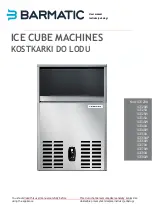
14
INSTRUCTIONS FOR USE
HOW TO MEASURE INGREDIENTS
One of the most important steps for making good bread is to use the exact measure of
ingredients. Always use the measuring cup and spoon provided with your bread maker.
• Any liquid should be measured with the measuring cup or spoon provided. Observe the
level of the measuring cup at eye level.
• When measuring cooking oil or other liquids, wash, rinse and dry the measuring cup
and spoon thoroughly before measuring any other ingredients.
• Dry ingredient measuring must be done by gently spooning ingredients into the
measuring cup and then, once filled, level it off with a knife. Do not be tempted to add
more than required or to pack it down tightly into the cup as it will affect the recipe.
• When measuring small amounts of dry ingredients e.g. yeast, sugar and salt, use the
measuring spoon supplied. Measurements must be level, not heaped, as this could
affect the recipe.
The measuring cup holds approximately 160g of flour, or 250ml
1 teaspoon = 5ml
1 tablespoon = 15ml
ADDING ADDITIONAL FLAVOURINGS AND INGREDIENTS
You can do this in three ways (or a combination of them):
1. You can add extra ingredients to the bread pan with your basic ingredients. If added
at the start of the programme they will be more finely distributed throughout the
mixture and will not remain whole – they will however add flavour and colour to the
dough.
2. If the programme has a time function to add ingredients, the appliance will beep
10 times and display
, when extra ingredients can be added by opening the lid.
3. If using the DOUGH programme you can knead extra ingredients in by hand before
shaping and baking.
TIPS: 1. Do not add too much fruit, seeds etc., 50-80g is appropriate.
2. Do not add very hard ingredients, they can cause abrasion and damage the
non-stick coating of the bread pan.
Suggestions of ingredients to be added - nuts e.g. walnuts (chopped), poppy seeds,
cheese (grated), sunflower, fennel, caraway and cumin seeds.















































